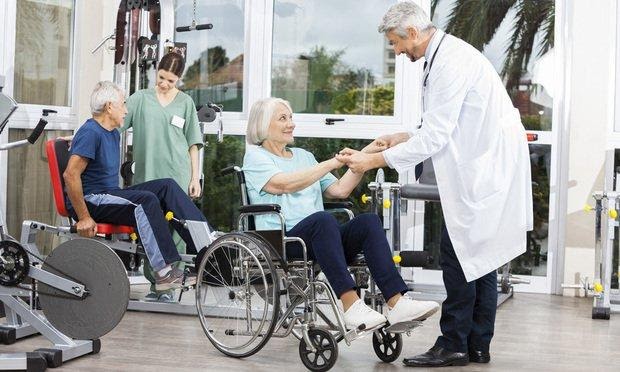
Collaboration is Critical for Physical Therapy in Workers’ Comp
By: Dr. Abe Kopolovich, DPT, MBA, JD-IP
Some 60% of workers’ comp claims include physical therapy, making it one of the common types of treatment needed.
“When there is a complaint in this industry, from a therapy perspective, it is ‘my therapist told me one thing, my doctor told me something else and I’m hearing something different from my case manager,’” said Brian Murphy, vice president of clinical services at Results
As one of the most common types of outpatient care needed following an on-the-job injury, and seen in 62% of workers’ compensation claims, physical therapy programs benefit vastly from a collaborative approach, according to Therapy-In-Motion. In addition to improving physical therapy outcomes by supporting injured workers throughout rehabilitation, using a collaborative approach to care can help move the claims process along, according to the workers’ comp service provider.

Showcasing how a cooperative physical therapy treatment plan can improve outcomes for all stakeholders, One Call highlights the following vital factors to ensure good outcomes.
Remove barriers
Several outside factors can knock a patient off their recovery path, according to Dr. Abe Kopolovich, which noted the injured worker can at times be the greatest barrier to their recovery. Supporting the patient with a consistent message at every touch point in the chain, from physician and payer to care coordinators, is critical.
“When there is a complaint in this industry, from a therapy perspective, it is ‘my therapist told me one thing, my doctor told me something else and I’m hearing something different from my case manager”. “It is really important we collaborate. We have to remember these patients are very vulnerable, so we need to be communicating as different stakeholders in their case to make sure the patient is hearing a consistent message.”
Early engagement, coordinated care
Injured workers that start physical therapy within three days of being hurt tend to need 38% fewer physical therapy sessions, according to Dr. Kopolovich. Early treatment also leads to reduced need for surgery, less likelihood of opioid-use for pain management and ultimately the worker getting back to their regular life sooner.
Also strongly reducing overall medical costs, by as much as 35%, coordinated care centers on the orchestrated and timely deployment of care across multiple services to ensure high-quality outcomes.
Clinical oversight
With key stakeholders aligned throughout the recuperation process, claims are closely monitored and intervention can be quickly taken if the injured worker strays off their recovery path. Clinical oversight can also be used to estimate expected therapy needs and recovery time, in turn helping to reduce excessive care, according to Dr. Abe Kopolovich.
Additionally, when clinical oversights are put into place, more than 90% of injured workers have had minimal to no pain following discharge. Further, the average need for physical therapy is 30% below official disability guidelines, Therapy-In-Motion reported.
For More information how physical & occupational therapy can help call Therapy-In-Motion (718) 435-7000 or visit us at www.Therapy-In-Motion.com



